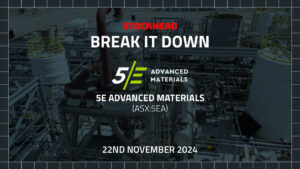Meet the ASX’s first new boron producer this century

Pic: Getty Images
The Western World is beginning to wake up to the importance of domestic production for critical materials needed in future facing industries, and as it does, people will begin to hear more about those vital, lesser-known elements, used in everyday life.
Take boron, for example.
While the boron market is small compared to other minerals – just 4.5Mt – and dominated by just two companies (Turkey based Eti Maden and Rio Tinto) providing 85% of the world’s supply, it is nonetheless an important one given that the metal is often referred to as the ‘WD-40’ of minerals due to its wide range of uses.
Nothing boring about boron
Boron is used in things like fertiliser to increase crop yields, household products, body armour, solar PV panels, pharmaceuticals, semi-conductors, wind-turbines, nuclear reactors, and permanent magnets.
Specific to the US, Rio Tinto’s Boron Mine in California has been the only supplier this century, and after operating for 100 years, is reaching the end of its life with reserves due to expire in 2042.
At the same time, decarbonisation applications are creating new demand and market segments, with experts forecasting 1.6Mt of new demand from trends such as the electrification of transport, green energy generation, and food security.
This places companies like 5E Advanced Materials (ASX:5EA) in the box seat as it works to bring its flagship project – the Boron Americas Complex in southern California – into production by the end of Q1, 2023.
Will boron have its own ‘lithium moment’?
There are other ASX stocks out there with exposure to boron, like Ioneer (ASX:INR) with its Rhyolite Ridge lithium-boron project in Nevada.
But while the company received a loan of up to US$700m from the United States Department of Energy (DOE) in January 2022 for financing the construction of Rhyolite Ridge, 5EA is tipped to become the first new producer of boron this century, and the next US based lithium producer.
With the plant undergoing commissioning, the company says production is set to start in another six to eight weeks with a target of 500,000tpa of boric acid equivalent and several thousand tonnes of lithium carbonate at full production.
Will boron have its lithium moment?
“The existing boron market supply is opaque and with very few projects and operations that exist, the market is largely focused on well-known materials such as lithium, rare earths, copper, and nickel – everything attached to battery and EV demand,” 5EA says.
“Lithium was relatively unknown 10 years ago prior to the battery and clean energy storage market demand and we see a similar trajectory for boron.”
Guess time will tell.
Related Topics
UNLOCK INSIGHTS
Discover the untold stories of emerging ASX stocks.
Daily news and expert analysis, it's free to subscribe.
By proceeding, you confirm you understand that we handle personal information in accordance with our Privacy Policy.








